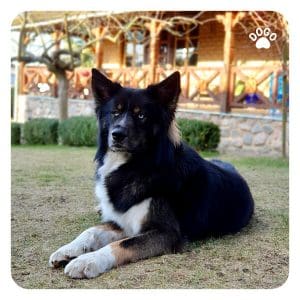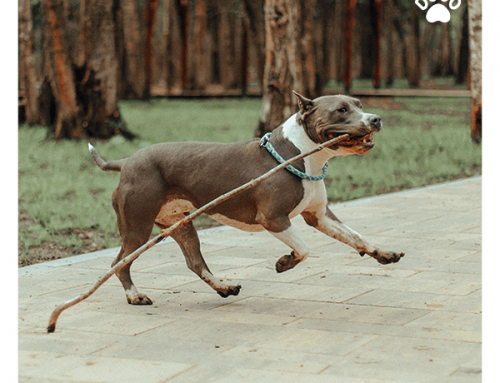
First of all, don’t react after the fact! Make sure your pet is comfortable at every stage of the relocation. Don’t just focus on what happens afterward. You can take care of many aspects right before and during the move to help your pet acclimate to their new home.
1. Before Moving
Visiting the new house/apartment
Acclimatization to a new place is a process that depends on a dog’s personality traits and life experiences. This process is not one of the easiest for every pet. However, you can reduce the drastic nature of the event by gradually accustoming your dog to the new home. If you have the opportunity, visit the new place together before you move for good. Try to make each stay there enjoyable. Build positive associations with the place. For example, you can give your dog a favorite chew, play tug-of-war with them, or organize a sniffing game. This way, your dog will associate the new place with something pleasant. It will make their acclimatization easier. Additionally, you can also use pheromone sprays or diffusers to help reduce stress levels in your dog. These sprays mimic the natural pheromones that dogs produce which can help calm them down in stressful situations.
Walks in the neighborhood
In addition, you can also take regular walks in the neighborhood around your new home. Allow your dog to get used to the new pathways and get to know the neighbors. Remember not to take your pet to a place where renovations are taking place. The noise can frighten your pet and cause the opposite of the intended effect. If you don’t have any ideas for sniffing games, take a look at our DOGO app! You will indeed find many great ideas there.
Planning
Think tactically! Plan everything that has to do with the move. It will prevent chaos from happening. You will minimize the stress associated with the event. Try to plan the move so that you don’t feel pressured by time and rush. Don’t forget about your dog! Their daily routine is essential. It gives them stability and a sense of security. If you neglect it, you will make them feel lost already before the move.
Packing

2. During the Move
Don’t neglect your dog’s daily routine
Be sure to meet their basic needs, such as food, drink, adequate quantity and quality of walks, peaceful sleep, or playtime. If the hustle and bustle prevent you from caring for your pet, temporarily provide other care. Ask your family or friends to help. Ideally, these should be people who are familiar with your dog. Those with whom they feel comfortable.
Keep your pet safe
There is usually a lot of chaos when packing and moving furniture/ luggage out. Doors are constantly being opened and closed. Lots of dogs will love to take advantage of this opportunity! Especially if they have a runaway nature. Try to keep your dog out of the house that day. If you don’t have the opportunity to put them in someone else’s care, make sure they wear a current address tag. Apart from that, try to find a quiet place for them to rest. A crate would be an ideal solution. Of course, you should familiarize your dog with it much earlier. If you can’t find a quiet place for your dog to rest, consider playing some calming music or leaving the TV on to help block out the noise. You can also use a calming shirt or vest that applies gentle pressure to your dog’s body to reduce anxiety. It’s important to keep a close eye on your dog during the move and make sure they don’t get into anything dangerous or harmful.
3. After the Move
Give your dog time to acclimate

Follow the same rules
If you start bending old rules and introducing various new ones, your pet will get confused. In addition, dogs operate fairly schematically, so any changes right after you move can cause even more confusion.
Follow your dog’s daily schedule
Remember that your dog’s world has just turned upside down. The entire environment has changed. However, you can prevent chaos by maintaining your dog’s routine. It will be much easier for your dog to adjust to the new place if the daily schedule remains the same.
Set up a place for your dog to rest
Provide a quiet corner that will allow your dog to relax. Place their bed in a quiet and peaceful corner of the house. Make your dog feel safe and comfortable in it. Ideally, it should be a bed that your dog has used before. Remember that proper sleep reduces excess stress in the body. Allow your pet to sleep off recent events.
Ensure that your dog stays calm
Organize sniffing and mental games for your pet. It will help your dog gain confidence and learn independence. You can also reduce their excitement by fulfilling the chewing need. Dogs get tired and relieve tension by chewing. Natural chews and rubber toys that you can fill with your pet’s food are great for this.
Some dogs may experience separation anxiety after a move, so it’s important to gradually get them used to being alone. Start by leaving them alone for short periods of time and gradually increase the duration. You can also leave them with a special treat or toy to keep them occupied. Remember to always reward good behavior and be patient with your dog during this adjustment period.
Show your dog support
Be understanding to your pet if you want to avoid your dog getting anxious after moving into a new house. Give them the appropriate amount of attention, do not shout at your dog when they do not cope well with the new situation. Be there for them, but don’t pressure them if they need space. Good luck!
Create a Personalized Training Plan for your Dog






